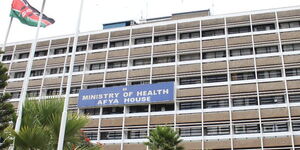As towns grow, a higher population poses a major challenge for urban planning in terms of congestion. This leads to a stretching of resources among the public transport.
Over the past couple of years, a number of Kenyan cities and towns have adopted measures to restore order in the public transport system especially in their Central Business Districts (CBDs).
Nairobi City
Nairobi City has for years tried to implement the matatu CBD ban for years under different administrations without any success.
In 2020, the Nairobi Metropolitan Services took to offer alternative termini for the matatus in preparation for the ban.
The much-publicized Green Park Terminus will have a capacity of 300 to 350 vehicles at any one time, processing about 1,000 PSVs per hour and 20,000 PSVs per day.
The terminus will have a system that will control the movement of matatus in an orderly manner showing which vehicle has been assigned to which route and boarding time.
The terminus also hosts an equipped level 2 hospital, a police post, supermarket, and eateries.
Other termini expected to be completed in the city include Fig Tree Terminus, New Desai and Park Road termini.
Machakos country bus which is, Nairobi’s oldest bus station will also be converted into an underground parking lot that will be digitally operated.
Kisumu City
The city county government banned matatus from accessing the CBD after completion of the Nyamasaria Bus Terminus.
The project, which is aimed at significantly reducing traffic in the CBD, cost Ksh99.8 million and is set to host matatus from Nairobi, Kisii, Homa Bay, Migori and Kericho.
The county government also directed the county police boss, the city inspectorate director and the city engineer to enforce the new directive.
Kisumu City decongesting plan includes the establishment of a Bus Rapid Transport (BRT) system.
In March 2020, the County Government of Kisumu, ITDP, and the United Nations Human Settlements Programme (UN-Habitat) organized a car-free day as part of the sustainable development towards implementing better streets in the lakeside city.
Narok County
Narok County put in Ksh131 Million in the construction of a bus terminus to decongest the rapidly-growing town.
With an expected completion date of July 2021, the bus stage will have a capacity of 120 vehicles with each matatu SACCO operating in the town designated four slots.
The terminus will comprise 150 stalls which the governor said will be rented out with priority going to deserving vulnerable businesspersons, mainly women and youth, to boost their income.
During an inspection tour of the facility, county governor Samuel Tunai stated that the facility would also have three toilet blocs and a constant supply of water to maintain high levels of hygiene at all times.
There are three exits and three entrances designed to facilitate the smooth flow of traffic in and out of the stage.
“This is expected to reduce congestion in the now busy town as Matatus are forced to crowd in the street corners and sometimes cause huge traffic snarl-up,” he added.
Nakuru County
Governor Lee Kinyanjui's administration put up Ksh100 million for a modern bus terminus and parking lot for private vehicles in the town.
The county also acquired land at the Gate House roundabout that was previously occupied by a private company and revealed plans to establish an ultra-modern PSV park.
The bus park was part of a Ksh600 million plan to build a new market in a grand scheme of decongestion of the CBD.
However, in the months preceding the implementation of the ban of matatus to access the CBD, the operators have been at loggerheads with the county over the operation.
Nyeri County
Nyeri County embarked on the ambitious construction of the Nyeri Town Transport Termini when area Governor Mutahi Kahiga presided over the groundbreaking ceremony in 2019.
At a cost of Ksh600 Million, the terminus once complete will have 800 business stalls, six restaurants, 240 matatu stages, taxi bays, TukTuk bays, 98 booking bays, 51 lorry bays, 94 passenger waiting bays and ticket offices.
Other amenities will include a fire sub-station, a police post, a power sub-station, a garage, five sanitation blocks, an open-air market, shops, a block of offices and an ICT hub.
The bus park, set to be one of the largest smart termini hubs in Kenya and is expected to create an affordable and efficient transport mechanism.
"Not only will it reduce traffic and human congestion within the Central Business District but it will also create job opportunities to thousands of area residents," Kahiga observed.
Rehabilitation of access roads in the neighbouring estates has also been done to ease traffic movement and street lighting projects to enable a 24-hour economy.
The termini will employ approximately 7,000 people on a daily basis and also have daily movement of over 20,000 passengers once operational.












